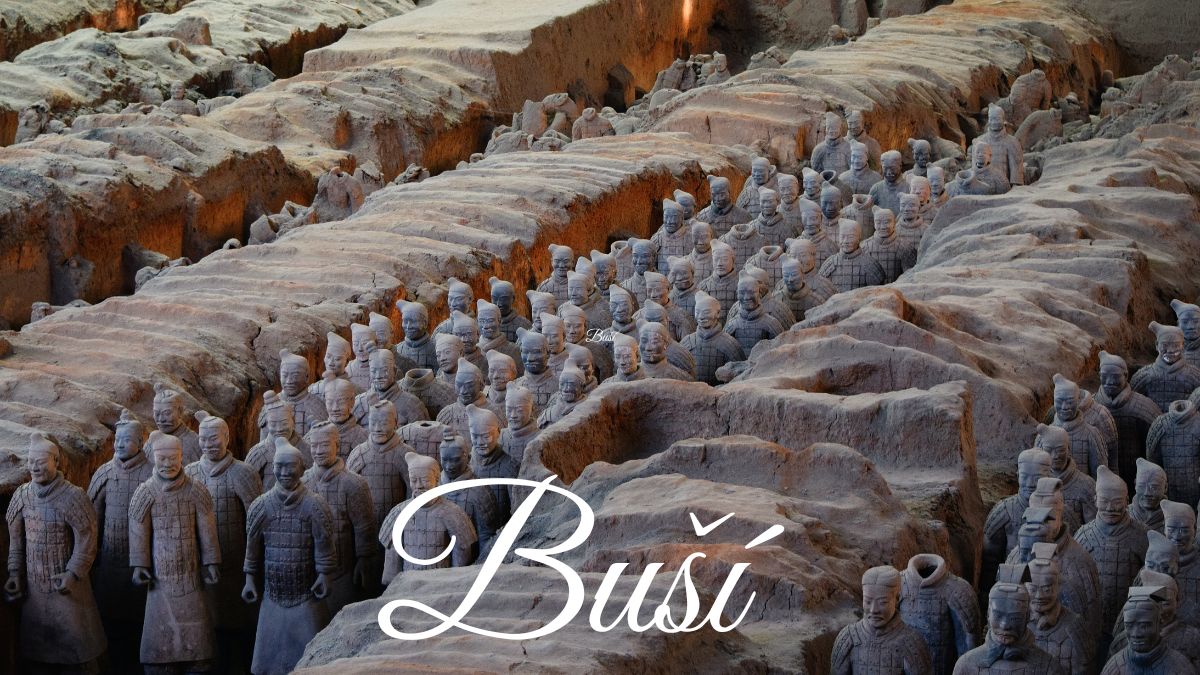History
Discover the Fascinating World of Käätjä: Exploring Its Origins and Significance

Step into the enchanting world of Käätjä, where traditions come alive and creativity knows no bounds. Prepare to be captivated by the rich history, cultural significance, and modern applications of this fascinating art form. From its humble origins to its global recognition, Käätjä has woven itself into the fabric of societies across the globe.
In this blog post, we will delve deep into the archives to unearth the hidden gems that lie within the realm of Käätjä. We will explore its diverse categories, uncover its linguistic roots, and discover how it has influenced local arts and crafts. Join us on this remarkable journey as we shed light on a world brimming with imagination and ingenuity.
But wait! There’s more! We’ll also unravel misconceptions surrounding Käätjä in popular media and highlight efforts made for its cultural preservation. Whether you’re an avid enthusiast or new to this captivating art form, there’s something here for everyone.
So fasten your seatbelts as we embark on an exploration filled with wonderment and discovery. Let’s dive headfirst into the magical universe of Käätjä!
Archives
Delving into the archives of Käätjä is like opening a treasure trove of hidden knowledge. These meticulously preserved records provide a glimpse into the past, revealing the evolution and intricacies of this ancient art form. From faded photographs to handwritten manuscripts, each artifact holds stories waiting to be unraveled.
Within these hallowed halls, one can explore the rich tapestry of Käätjä’s history, tracing its origins through generations. The archives serve as portals to bygone eras, where techniques were perfected and traditions were passed down from master to apprentice. They offer a rare opportunity for us to connect with our ancestors and gain insight into their creative genius.
As we immerse ourselves in these historical documents, we become witnesses to the timeless beauty that has been painstakingly preserved throughout centuries. It is through these archives that we honor the legacy of Käätjä and ensure its enduring presence in our world today. So let us step back in time together and unearth the wonders that lie within!
Categories
When delving into the fascinating world of Käätjä, it becomes apparent that this rich cultural practice encompasses a wide range of categories. From the traditional to the contemporary, there are numerous avenues through which people engage with and express their appreciation for Käätjä.
One category within Käätjä is its historical archives, which provide valuable insights into the origins and evolution of this art form. These archives contain invaluable artifacts, texts, and recordings that shed light on how Käätjä has shaped communities throughout history. Another category is the various traditions and rituals associated with Käätjä. These practices often involve intricate ceremonies and performances that honor ancestral connections and celebrate cultural heritage. Whether it’s through dance, music, or storytelling, these rituals serve as a means to pass down knowledge from one generation to another.
Origin and Etymology
The fascinating world of Käätjä is steeped in rich history and cultural significance. Its origin and etymology are shrouded in mystery, captivating the minds of scholars and enthusiasts alike.
Scholars believe that Käätjä traces its roots back to ancient traditions passed down through generations. The word itself is believed to have originated from an ancient language, with various interpretations lending depth to its meaning. Some say it signifies “connection” or “bond,” while others suggest a deeper spiritual connotation related to harmony and balance.
Whatever its true origins may be, there’s no denying the profound impact Käätjä has had on communities across the globe. Its significance transcends borders and cultures, weaving together a tapestry of shared experiences and traditions. From traditional ceremonies to everyday practices, Käätjä continues to play a vital role in shaping our collective identity as human beings.
Cultural Significance
Passed down through generations, this practice has evolved over time, finding its place even within urban lifestyles.
Käätjä holds distinctive characteristics that define it as a unique cultural phenomenon. Its regional variations add to its richness and diversity, making it an integral part of different communities around the world. From representation in films and literature to its influence on global pop culture, Käätjä continues to captivate people’s imagination.
Modern Applications
In today’s fast-paced world, the ancient art of Käätjä has found its place in modern society. With advancements in technology and a growing interest in cultural preservation, this traditional practice has evolved to meet the needs of contemporary lifestyles.
One of the most exciting aspects of Käätjä is its integration into various industries. From fashion to interior design, artists and designers are incorporating Käätjä techniques into their creations, adding a touch of authenticity and uniqueness. The intricate patterns and vibrant colors that define Käätjä have captivated the imagination of many, resulting in stunning works that blend tradition with innovation.
Moreover, Käätjä has also made its mark in the field of wellness and mindfulness. Many individuals have discovered the therapeutic benefits of engaging in this ancient craft. The rhythmic movements involved in creating Käätjä pieces can promote relaxation and reduce stress levels. As a result, workshops and classes focusing on teaching Kääjtja techniques have gained popularity as people seek ways to reconnect with their creativity while finding inner peace.
The modern applications for Kääjtja continue to expand as more people recognize its beauty and significance. Whether it’s through artistic endeavors or personal well-being practices, this timeless tradition offers a window into history while embracing contemporary lifestyles.
Distinctive Features
One of the most intriguing aspects of Käätjä is its array of distinctive features. From its vibrant color palette to its intricate patterns, Käätjä stands out as a true work of art.
Moreover, what sets Käätjä apart is its unique blend of ancient techniques and contemporary design sensibilities. The combination creates a captivating fusion that appeals to both traditionalists and modern enthusiasts alike. With its rich history and innovative approaches, Käätjä continues to evolve while staying rooted in its cultural heritage.
Käätjä in Popular Media
Käätjä has captured the attention of popular media, becoming a source of fascination for both creators and audiences alike. From films to literature, this unique cultural practice has made its mark on various forms of entertainment.
In literature, Käätjä serves as a symbol of tradition and heritage. The vivid descriptions allow readers to imagine the vibrant colors used in Käätjä creations and feel the sense of pride that comes from preserving an age-old craft.
Käätjä’s presence in popular media helps raise awareness about its cultural importance while also showcasing its artistic value to wider audiences around the globe.
Challenges and Controversies
Navigating the world of Käätjä is not without its fair share of challenges and controversies. As this traditional practice gains recognition globally, there are debates surrounding cultural appropriation and misinterpretation. Some argue that the commercialization of Käätjä undermines its authenticity, diluting its significance in the process.
Additionally, there are concerns about the exploitation of artisans who create Käätjä products. The demand for these unique items has led to mass production, often at the expense of fair wages and ethical sourcing practices. These issues highlight a delicate balance between preserving tradition and adapting to modern demands.
Despite these challenges, efforts are being made to address them head-on. Organizations dedicated to promoting cultural preservation actively collaborate with local communities to ensure that Käätjä remains authentic and respectful. Initiatives focusing on sustainable production techniques aim to protect both artisans’ rights as well as the environment.
In order for Käätjä to thrive into the future, it is crucial for individuals around the world to approach this practice with sensitivity and respect for its origins. By supporting initiatives that promote cultural preservation while encouraging sustainable practices, we can help preserve an art form that holds immense value not only within specific communities but also as part of our global heritage.
Community Engagement
One of the most remarkable aspects of Käätjä is its ability to bring people together and foster a sense of community. The practice of Käätjä often involves group activities, where individuals come together to learn, create, and celebrate. These gatherings provide an opportunity for people to connect with each other, share their knowledge and skills, and build strong bonds that extend beyond the realm of Käätjä itself.
In addition to these physical gatherings, technology has also played a significant role in promoting community engagement within the world of Käätjä. Online forums, social media groups, and digital platforms have enabled enthusiasts from all corners of the globe to connect with each other, exchange ideas, showcase their work, and support one another’s creative endeavors. This virtual sense of community has not only expanded the reach and impact of Käätjä but has also provided a platform for marginalized voices within the craft to be heard and celebrated.
Learning and Teaching “Käätjä”
Learning and teaching “Käätjä” is a captivating journey that transports individuals into the heart of this fascinating practice. Those eager to immerse themselves in its rich history and cultural significance can find various resources and platforms dedicated to preserving and sharing this unique art form. Through workshops, courses, and online tutorials, enthusiasts can acquire the skills needed to master the intricate techniques of “Käätjä”. With expert guidance from experienced practitioners, learners can delve into the secrets of this ancient craft.
Teaching “Käätjä” is equally rewarding as it allows experienced artisans to pass down their knowledge to future generations. The process involves not only imparting technical expertise but also fostering a deep appreciation for the tradition’s roots and values. Instructors inspire students by showcasing their own creations while encouraging them to explore their creativity within traditional boundaries. By embracing both theory and hands-on practice, learning “Käätjä” becomes an immersive experience that connects individuals with centuries-old craftsmanship. So whether you’re a novice enthusiast or an aspiring teacher, there are endless opportunities to discover the beauty of “Käätjä” through education and mentorship programs.
Impact on Well-being
Discovering and immersing oneself in the fascinating world of Käätjä can have a profound impact on well-being. The practice of Käätjä, with its rich history and cultural significance, offers individuals a sense of connection to their heritage and traditions. Engaging in this art form allows for creative expression, promoting mindfulness and reducing stress.
Through the intricate process of creating Käätjä pieces, individuals are able to find solace and relaxation. The rhythmic movement of the hands while weaving threads together creates a meditative experience that promotes mental clarity and emotional well-being. Additionally, the vibrant colors used in Käätjä designs evoke joy and positivity, enhancing overall mood.
Engaging with Käätjä also fosters a sense of community as individuals come together to learn from one another’s techniques and share stories passed down through generations. This communal aspect strengthens social bonds and provides support networks, contributing to overall happiness levels.
Embracing the world of Käätjä positively impacts well-being by providing an avenue for self-expression, promoting mindfulness through creativity, fostering community connections, all while celebrating cultural heritage.
Global Recognition
The fascinating world of Käätjä has captivated people from all corners of the globe. Its unique traditions and cultural significance have gained recognition on an international scale, making it a cherished art form worldwide.
Käätjä’s global recognition can be attributed to its ability to transcend boundaries and connect with people across different cultures. Through various initiatives, exhibitions, and festivals, Käätjä has found its place in the hearts of art enthusiasts, researchers, and curious individuals seeking to explore diverse cultural practices. This widespread appreciation highlights the universal appeal of Käätjä and its importance in promoting cross-cultural understanding.
The growing popularity of Käätjä has not only led to increased tourism in regions where it originates but also paved the way for collaborations between artists from different countries. This exchange of ideas has enriched the traditional techniques while introducing innovative approaches that breathe new life into this ancient craft. As more people recognize its beauty and significance, efforts are being made to preserve and promote this valuable heritage for future generations.
Future Prospects
The future prospects of Käätjä are filled with excitement and possibilities. As this traditional practice continues to gain global recognition, it has the potential to thrive and evolve in new and innovative ways. With advancements in technology, there may be opportunities to explore digital platforms for preserving and promoting Käätjä.
Additionally, as sustainability becomes a growing concern worldwide, the eco-friendly nature of Käätjä could make it even more relevant in the years to come. By incorporating sustainable materials and techniques into its practices, Käätjä can contribute towards a greener future. The continued engagement of communities and organizations dedicated to its preservation will play a crucial role in shaping what lies ahead for this fascinating tradition.
Käätjä and Sustainability
When it comes to sustainability, Käätjä has a lot to offer. This ancient practice embraces the use of natural materials and traditional techniques that have been passed down through generations. From gathering locally sourced fibers to dyeing them with organic pigments, every step is carefully considered to minimize environmental impact.
In addition, Käätjä encourages a deep connection with nature, fostering an appreciation for the resources it provides. By promoting sustainable practices such as responsible harvesting and ecological awareness, this art form not only preserves traditional knowledge but also helps protect our planet for future generations.
Historical Background
The historical background of Käätjä is a captivating tale that traces its roots back centuries. It is believed to have originated in the remote villages nestled within the lush forests of Northern Europe. Passed down through generations, this ancient practice has stood the test of time, surviving wars and societal changes.
In these early days, Käätjä was an integral part of everyday life for the local communities. It played a crucial role in their traditions and rituals, weaving together stories and beliefs with intricate patterns and symbols. The artistry behind Käätjä was highly revered, reflecting both practical skills and deep cultural significance.
As it spread across different regions, Käätjä evolved to incorporate influences from neighboring cultures while still maintaining its distinct identity. This adaptation allowed it to transcend boundaries and become a beloved form of expression not just among rural communities but also in urban settings where it found new avenues for creativity.
From humble beginnings rooted in tradition to becoming a cherished craft celebrated worldwide today, the historical background of Käätjä lays the foundation for exploring its fascinating journey through time.
Linguistic Roots
The linguistic roots of Käätjä can be traced back to ancient civilizations and tribal communities. Through generations, this unique language has evolved and adapted to various cultural influences, resulting in its distinct vocabulary and grammar structure. The phonetics of Käätjä are particularly fascinating, with a melodic flow that reflects the harmonious relationship between nature and human expression.
Käätjä’s linguistic roots not only provide insight into its historical origins but also offer glimpses into the cultural values and beliefs cherished by its speakers. Its rich vocabulary embodies a deep connection with the natural world, encompassing words for plants, animals, landscapes, and celestial bodies. The intricate grammatical structures allow for nuanced expression of emotions, thoughts, and experiences that may transcend literal translation.
Role in Traditions and Rituals
For centuries, Käätjä has played a vital role in the rich tapestry of traditions and rituals. Passed down through generations, this ancient practice holds deep significance for communities around the world.
In various cultures, Käätjä is woven into ceremonies marking important life milestones like births, marriages, and funerals. Its intricate patterns symbolize unity, prosperity, and protection. Whether it’s adorning ceremonial garments or creating sacred objects, Käätjä connects individuals to their roots and fosters a sense of belonging within the community. The rhythmic weaving process itself becomes a meditative ritual that brings people together in celebration or reflection on significant moments in life.
Impact on Local Arts and Crafts
The rich heritage of Käätjä has had a profound impact on the local arts and crafts scene. The intricate patterns and vibrant colors that characterize this traditional practice have inspired generations of artists, craftsmen, and artisans in the region.
Local painters incorporate elements of Käätjä into their artwork, creating stunning pieces that pay homage to this age-old tradition. Sculptors mold clay into exquisite figurines adorned with Käätjä motifs, capturing the essence of this cultural phenomenon. These artistic expressions not only preserve the legacy of Käätjä but also serve as a source of inspiration for contemporary creatives seeking to merge tradition with modernity.
In addition to visual arts, Käätjä has influenced various craft disciplines such as embroidery, weaving, and pottery. Skilled weavers expertly incorporate colorful threads reminiscent of traditional Käätjän patterns into textiles like rugs and tapestries. Pottery enthusiasts use techniques passed down through generations to infuse their ceramics with unique designs inspired by the intricate motifs found in Kääjtän artistry.
Through their craftsmanship, these local artists breathe new life into an ancient practice while ensuring its continuation for future generations. Their dedication to preserving the cultural significance ingrained in every stitch or brushstroke helps foster a deep appreciation for the beauty and intricacy that is synonymous with Kääjtän artistry
Evolution of “Käätjä” Practices
Over the years, the practices of “Käätjä” have evolved and adapted to changing times. From its humble beginnings as a traditional craft passed down through generations, it has now transformed into a dynamic art form that embraces modern techniques and materials.
In recent years, artists and enthusiasts have been experimenting with new styles and incorporating contemporary elements into their “Käätjä” creations. This evolution has not only breathed new life into the practice but also opened up opportunities for innovation and collaboration. Today, you can find stunning examples of “Käätjä” pieces that blend traditional patterns with modern designs, creating a harmonious fusion of old and new. The ever-evolving nature of “Käätjä” ensures its relevance in today’s world while preserving its rich cultural heritage.
Integration into Urban Lifestyles
With its rich history and cultural significance, Käätjä has seamlessly integrated into urban lifestyles across the globe. As cities continue to grow and evolve, this traditional practice has found its place in modern society. People from all walks of life have embraced Käätjä as a way to connect with their roots and preserve their cultural heritage.
In bustling urban centers, you can often find workshops and classes dedicated to teaching the art of Käätjä. These spaces provide a haven for individuals seeking respite from the fast-paced city life. Urban dwellers are drawn to the calm and meditative nature of Käätjä, allowing them to unwind and reconnect with themselves amidst the chaos of everyday living. It serves as a reminder that even in busy cities, there is room for tradition and introspection.
As urban communities embrace diversity and inclusivity, Käätjä becomes an important symbol of unity among different cultures. Through shared experiences in workshops or gatherings, people from various backgrounds come together over their love for this ancient practice. The integration of Käätjä into urban lifestyles creates opportunities for cross-cultural exchanges, fostering understanding and appreciation among diverse communities.
Breaking away from monotonous routines, individuals are finding solace in practicing Kääjtja through workshops which provide them with relief from hectic city lives
Kääjtja has been able to integrate itself within these rapidly evolving environments by offering a sense peace & tranquility.
It’s interesting how such ancient practices have become increasingly relevant within our modern world
Characteristics that Define “Käätjä”
Käätjä is a unique cultural practice that is characterized by its distinct features. One of the key characteristics of käätjä is its emphasis on community engagement and collaboration. Käätjä brings people together, fostering a sense of unity and shared purpose as individuals come together to create something meaningful.
Another defining characteristic of käätjä is its connection to nature. This traditional practice often incorporates elements from the natural world, such as plants, animals, and natural materials. It celebrates the beauty and abundance of nature while also promoting sustainability and environmental consciousness.
These characteristics make käätjä a truly special tradition that continues to captivate people around the world. Its focus on community, collaboration, and connection with nature sets it apart and makes it an integral part of many cultures globally.
Regional Variations
One fascinating aspect of Käätjä is the presence of regional variations. Each region infuses its own unique flavor into this ancient practice, resulting in a diverse tapestry of techniques and styles. From the intricate patterns found in the northern provinces to the bold color combinations favored by artisans in the southern regions, every area showcases its distinct interpretation of Käätjä.
These regional variations not only add depth and richness to the art form but also provide an opportunity for artists to express their individuality. Whether it’s through subtle differences in weaving techniques or innovative use of materials indigenous to a specific area, these regional distinctions keep Käätjä vibrant and ever-evolving. Exploring these variations allows us to appreciate both the unity and diversity within this captivating craft.
Representation in Films and Literature
The captivating world of Käätjä has found its way into numerous films and literature, enchanting audiences with its rich cultural heritage. Meanwhile, in literature, Käätjä serves as an integral part of storytelling, adding depth to characters and providing a window into the fascinating traditions surrounding this ancient practice.
Through visual mediums such as cinema and literature, Käätjä breathes life into narratives by showcasing its intricate techniques and artistic expressions. These representations not only entertain but also educate people about the beauty of this traditional craft. By highlighting Käätjä’s significance in popular media, it sparks curiosity among audiences worldwide and encourages them to explore further beyond what they see on screen or read on pages.
Influence on Global Pop Culture
The influence of Käätjä on global pop culture cannot be underestimated. From the intricate patterns and vibrant colors that have inspired fashion designers around the world to the use of Käätjä motifs in popular films and music videos, this art form has captivated audiences far beyond its origins. The unique aesthetic of Käätjä has permeated various industries, influencing everything from interior design to graphic arts.
Käätjä’s impact is evident in the rise of “Käätjälism,” a movement that celebrates and incorporates elements of this traditional craft into contemporary art forms. Artists across different disciplines have embraced Käätjäs techniques, incorporating them into their work as a means of paying homage to this rich cultural heritage. This fusion between tradition and modernity has resulted in captivating creations that resonate with people all over the world.
Through these representations, Käästas become synonymous with exotic beauty and craftsmanship, adding an element of intrigue and mystique to popular culture.
It is evident that Käästas influence on global pop culture extends far beyond its geographical boundaries. Its distinctive style continues to inspire artists worldwide while captivating audiences through its mesmerizing aesthetics. As we look towards the future, it will be fascinating to see how this ancient craft continues to evolve and make its mark on diverse creative fields globally
Misinterpretations and Stereotypes
Despite its rich cultural heritage, Käätjä has often faced misinterpretations and stereotypes. Some view it as a mere folk art form with little significance beyond entertainment, while others have perpetuated outdated stereotypes, portraying practitioners as eccentric or out of touch with modern society.
These misconceptions fail to capture the true essence and depth of Käätjä. It is more than just a hobby; it is an expression of identity, creativity, and connection to one’s roots.
Efforts for Cultural Preservation
Preserving the cultural heritage of Käätjä is a task that requires dedicated efforts from individuals, communities, and organizations alike. Local museums have played a crucial role in documenting and showcasing the history and craftsmanship associated with Käätjä. By curating exhibitions, organizing workshops, and conducting research, these institutions ensure that future generations can appreciate and understand the importance of this traditional art form.
In addition to museums, community-driven projects have also emerged as an integral part of cultural preservation. These grassroots efforts involve engaging with local artists and practitioners to encourage their continued involvement in Käätjä.
Initiatives for Promoting “Käätjä”
Promoting and preserving the rich heritage of “Käätjä” has become a priority for many organizations and individuals. Various initiatives have been launched to raise awareness about this fascinating tradition and ensure its continuity for future generations.
One such initiative is the establishment of cultural centers that offer workshops, exhibitions, and educational programs focused on “Käätjä.” These centers serve as hubs where enthusiasts can come together, learn from experienced practitioners, and exchange ideas.
entertainment
Ill Become a Villainess That Will Go Down in History

The way characters are portrayed in literature and entertainment has undergone a remarkable evolution. The rise of the villainess is one of the most notable character archetypes within the broad assortment. Ill become a villainess that will go down in history has enchanted audiences all around the globe. Discover the secrets of creating a captivating medieval villainess and discover why they remain popular in this essay.
Definition of Villainess in Literature
Casting a female character as the story’s enemy is known as “villainess” in the literary world. Many villainesses, in contrast to more stereotypical villains, have interesting and distinctive traits that make them interesting and unforgettable.
Rise of Villainess Characters in Pop Culture
There has been a marked increase in the popularity of villainess characters in literature, film, and television series throughout the years. People all across the world are very curious and intrigued by this phenomena.
Characteristics of a Memorable Villainess
Complexity and Depth
The complexity of a remarkable villainess’s persona is one of her defining features. Complex and nuanced villains are in high demand from modern audiences; gone are the days of simplistic villains.
Motivations and Backstory
A villainess’s persona takes on more depth as one learns her goals and history. These factors enhance the audience’s connection to the character, whether it’s motivated by vengeance, ambition, or a sad history.
Unique Personality Traits
A villainess’s unique character qualities are what set her apart from the others. These characteristics, which can range from a seductive appeal to a crafty intellect, leave an indelible mark on viewers.
Crafting a Historical Villainess
Setting and Time Period
One way to give a villainess more depth is to place her in a certain historical period. The villainess’s activities are shaped by the chances and difficulties presented by a bygone period.
Cultural Influence
A historical villainess’s character is greatly influenced by the cultural milieu in which she is depicted. The intricacies of her story are enriched by cultural standards, customs, and societal expectations.
Impact on the Storyline
A well-developed historical villain not only shapes the plot but also permanently alters its trajectory. Her deeds have a profound effect on the storyline, which astounds spectators and readers.
Popular Historical Villainesses
Literature Examples
Many historical villainesses have had a lasting impression on literature, whether it is classic books or modern works. Lady Macbeth and Scarlett O’Hara are still admired and researched today.
Cinematic Representations
Iconic historical villainesses have also made it to the big screen, brought to life by brilliant actors who play these multi-faceted roles. The visual depiction enhances the villainess character in a more profound way.
Challenges Faced by Historical Villainesses
Societal Expectations
Particularly for women, historical contexts tend to bring with them strict social norms. The struggles that the villainesses encounter while negotiating these expectations put their resilience and resolve to the test.
Gender Roles and Stereotypes
Historical villainesses often fight against societal expectations of their gender. Part of what makes them so appealing is the fact that they refuse to conform to accepted social standards.
Empowering Aspects of Villainess Characters
Breaking Norms
Villainesses’ independence from conventional wisdom is one of their strongest traits. Because of their defiance of authority, they stand as emblems of freedom.
Challenging Conventions
Conventions and established standards are challenged by villainesses. They inspire viewers to examine and overcome their own limitations by their courageous pursuit of goals, unaffected by society censure.
The Appeal of Becoming a Villainess
Freedom from Conformity
Being a villainess offers the attraction of not having to fit in with society. These individuals liberate themselves from conformity by embracing their uniqueness, serving as an example to others.
Embracing Unconventional Paths
Villainesses are known to defy tradition by taking unorthodox routes. For those who aren’t afraid to go off the beaten route, their story becomes an inspiration.
The Art of Storytelling
Building Suspense
An effective way to create a captivating villain is to gradually increase the stakes as the story progresses. Her character’s complexities are unveiled layer by layer, captivating the audience as they eagerly await more revelations.
Crafting a Memorable Climax
An important plot point in every novel including a villainess occurs at the end. A well-written conclusion does more than just wrap up the tale; it makes an effect on readers and cements the character’s position in the canon.
The Evolution of Villainess Tropes
Historical Changes
Villainess tropes have changed throughout the years to reflect shifting narrative tastes and cultural standards. In order to create a villainess that appeals to modern viewers, it is crucial to comprehend these shifts.
Modern Adaptations
Ill become a villainess that will go down in history is contemporary stories are shown with more complexity. Presenting villainesses in ways that defy assumptions and conventional wisdom, writers nowadays are delving into varied viewpoints.
Reader Engagement with Villainesses
Empathy and Sympathy
The ability to make the audience feel sorry for the villain is a mark of good storytelling. Narratives become more nuanced and engaging when readers empathize with the antagonist’s feelings and difficulties.
Fan Theories and Speculations
A lot of fan ideas and assumptions revolve around villainesses. Beyond the storyline, the audience is actively involved in conversations regarding the characters’ goals, destinies, and chances for atonement.
Impact on Popular Culture
Fan Following
How It Affects Fans of Popular Culture There is a devoted fan base for iconic historical villainesses. Fan art, fan literature, and other kinds of fan expression are deeply influenced by these figures, which further cements their place in popular culture.
Merchandising Opportunities
Ill become a villainess that will go down in history may be a great source of merchandise due to their widespread appeal. Many fans are quick to buy anything featuring their favorite villains, whether it’s a clothing line or a collectible.
Overcoming Misconceptions About Villainesses
Misunderstood Motivations
Misperception the reasons behind a villainess’ actions is a prevalent misperception. Exploring her complex personality allows us to better comprehend her behaviors and challenges preconceived notions.
Humanizing the Antagonist
In order to dispel stereotypes about villains, it is necessary to give them a human side. A more detailed and sympathetic depiction is achieved by highlighting their frailties and intricacies.
The Importance of Diverse Villainesses
Representation Matters
Diverse villainesses should be valued in inclusive narrative. A more diverse cast of characters in stories and films is the result of writers and actors bringing their unique experiences, viewpoints, and backgrounds to the table.
Intersectionality in Villain Characters
To give villains more dimension in stories, it’s important to examine their intersectionality. By assuming a variety of personas, villains are able to subvert preconceptions and make a greater impression.
Breaking the Mold: Crafting Your Own Villainess
Writing Tips
When developing a compelling villain, it’s important to think about her goals, history, and character quirks. Writers have the freedom to explore many characteristics in order to craft a character that surprises and delights.
Character Development Strategies
Strategic character arc planning is required when developing a villainess. Making ensuring the character goes through development, struggles, and transformation keeps them interesting and lively all through the novel.
Conclusion
Embracing the Villainess Legacy
Embracing the heritage of multi-faceted characters that question conventions and enthral audiences is more important than simply embodying evil ill become a villainess that will go down in history.
Encouraging Creative Expression
Ill become a villainess that will go down in history as readers and writers invites us to cherish variety in literature and explore alternative storylines. Beyond the confines of conventional narrative, it is a joyous celebration of creative expression.
FAQs:
Can a villainess be a positive role model?
By questioning accepted standards and encouraging others to be themselves, a well-written villainess may be an uplifting role model.
Why do audiences find villainesses fascinating?
The diversity, distinctive features, and triumphs over adversity that villainesses display captivate audiences.
Are there real-life historical figures similar to villainesses?
Although they are not identical, certain historical people encountered social resistance when they defied convention, much like fictional villainesses.
How can writers avoid clichés when crafting a villainess?
To stay away from tired tropes, writers should give their villains complex histories, unconventional goals, and unconventional personality qualities.
What role does empathy play in the portrayal of villainesses?
When villainesses are portrayed with subtlety and empathy, readers are able to relate to their hardships and understand what drives them.
History
Unveiling the Rich History and Cultural Heritage of Buší

Welcome to the enchanting world of Buší, a place steeped in rich history and cultural heritage. In this blog post, we will delve deep into the origins, meaning, and significance of Buší. Whether you’re a language enthusiast curious about Czech connections or an avid traveler seeking to explore new destinations off the beaten path, prepare to be captivated by the fascinating story that unfolds.
Buší may seem like a simple word at first glance, but its roots run deep and stretch far back into time. Join us on this journey as we uncover the layers of history that have shaped Buší into what it is today. From linguistic nuances to ancient traditions passed down through generations, there’s so much to discover about this hidden gem nestled within the heart of Europe.
But our exploration doesn’t stop there! We’ll also delve into how Buší has influenced local art forms such as music and literature, leaving an indelible mark on creative expression in the region. And fear not – if you’re wondering how you can experience Buší firsthand in modern times, we’ve got you covered with information on festivals celebrating this vibrant cultural phenomenon.
So fasten your seatbelts and get ready for an adventure like no other. Let’s embark together on a voyage through time and immerse ourselves in everything that makes Buší truly unique. Prepare to be amazed by tales from centuries past and inspired by the enduring legacy of one small word with extraordinary significance: Buší!
Outline: “Unveiling the Rich History and Cultural Heritage of Buší”
Buší, a word that holds within it centuries of history and cultural significance. In this blog post, we will dive deep into the meaning, pronunciation, and exploration of its Czech connection. We’ll unravel the historical references and etymology behind Buší while tracing its origins and evolution throughout time. Prepare to be transported back in time as we uncover how Buší has shaped the region’s identity.
But our journey doesn’t stop there! We’ll also explore the cultural heritage of Buší, from traditional practices and rituals associated with it to its influence on local art forms like music and literature. And fear not – if you’re curious about experiencing Buší today, we’ll guide you through preservation efforts, festivals celebrating this unique heritage, and help you appreciate its modern-day significance.
Get ready for an immersive experience where each discovery unveils another layer of intrigue surrounding Buší’s rich history and cultural heritage. Let’s embark on this enlightening adventure together!
Introduction
Welcome to the captivating world of Buší, where history and cultural heritage intertwine to create a rich tapestry of traditions and customs. This enchanting place holds secrets waiting to be unveiled, offering a glimpse into the past while celebrating the present.
Buší, pronounced boo-shee, is not just a word but an expression that encapsulates centuries of tradition and meaning. Its significance goes beyond its literal translation, allowing us to delve deeper into the heart and soul of a community that has cherished this word for generations.
Intriguingly enough, Buší has strong roots in Czech culture. Whether you are familiar with the Czech language or not, exploring the connection between Buší and its origins adds another layer of fascination. Join us on this journey as we uncover more about this fascinating term!
The Meaning and Pronunciation of Buší
Buší – a word that rolls off the tongue with a sense of intrigue and mystery. But what does it mean? And how exactly should it be pronounced? Let’s delve into the fascinating world of Buší and uncover its meaning.
In Czech, Buší is not just any ordinary word. It holds significance in both its pronunciation and its cultural context. The pronunciation can vary slightly depending on the region, but generally, you would pronounce it as “Boo-shee.” Its unique sound adds to its allure, giving it an enigmatic charm that captivates those who hear it.
But what does Buší actually mean? Well, in Czech language, Buší translates to “beating” or “pounding.” It carries a sense of rhythmic motion, evoking images of drums resonating through ancient forests or hearts pulsing with excitement. This powerful imagery reflects the vibrant cultural heritage surrounding Buší and hints at deeper symbolic meanings attached to this intriguing term.
Exploring the Czech Connection
The Czech Republic is a country known for its rich history and vibrant culture. It’s no surprise then that even a seemingly simple word like “Buší” holds deep meaning and significance in the Czech language. Let’s delve into this fascinating connection and discover what Buší truly represents.
In the Czech language, Buší serves as a versatile term with various forms and divisions. From nouns to verbs, it can take on different meanings depending on its usage. Whether describing the act of knocking or signifying someone who knocks, Buší has become an integral part of everyday conversation in the Czech society.
This linguistic phenomenon goes beyond mere semantics; it reflects the cultural significance attributed to Buší within Czech traditions. The act of knocking carries symbolic weight, representing not only physical movement but also communication and engagement with others. Through Buší, individuals express their desire to connect, seek attention, or announce their presence boldly.
The influence of Buší can be traced back centuries ago when it was widely used in historical references and literature from ancient times to modern-day works. Its evolution over time showcases not only changes in language but also shifts within society itself. By examining these historical contexts, we gain valuable insights into how this unassuming word has shaped local identity and contributed to cultural heritage.
From traditional practices rooted in folklore to contemporary expressions through art forms like music and literature – Buší remains an enduring source of inspiration for many artists today. This linguistic thread connects generations together by bridging past traditions with present-day interpretations.
While preserving cultural heritage is paramount, efforts are being made to revive interest in Buší among younger generations who may have lost touch with its historical roots. Festivals dedicated solely to celebrating this unique aspect of Czech culture provide opportunities for people from all walks of life to appreciate the beauty behind every knock.
Buší continues to find relevance even in our fast-paced modern world where digital interactions dominate our daily lives. It reminds us that amidst technological advancements, the human desire for connection and acknowledgment remains unchanged. So let’s embrace
Overview of Buší in Czech Language
Buší, a word that may sound unfamiliar to many, holds great significance in the Czech language. It is not merely a term but an integral part of the cultural fabric of this beautiful region. In Czech, Buší has multiple meanings and forms, each carrying its own essence and nuance.
The word Buší can be used as a verb or a noun, depending on the context. As a verb, it signifies actions like knocking or pounding. This reflects the dynamism and vibrancy deeply embedded in Czech culture. On the other hand, as a noun, Buší takes on different forms to adapt to various grammatical situations. It seamlessly weaves itself into everyday conversations and expressions among Czech speakers.
Buší is more than just words; it represents connections between people and their surroundings. Its usage goes beyond mere communication—it embodies shared experiences and emotions within the Czech society. From casual greetings to heartfelt conversations about life’s ups and downs, Buší adds depth to interactions by capturing moments of excitement, anticipation, or even frustration.
Divisions and Forms of the Word in Czech
In the Czech language, the word “Buší” holds various divisions and forms that add depth to its meaning. The beauty of this linguistic exploration lies in the versatility and adaptability of the word. From noun to verb, singular to plural, Buší takes on different forms depending on its usage.
When used as a noun, Buší can refer to a specific object or concept. It can describe a beating heart or even symbolize bravery and courage. On the other hand, when used as a verb, Buší transforms into an action – it represents pounding or knocking. This linguistic flexibility showcases how one word has multiple dimensions within the Czech language.
The fascinating thing about these divisions and forms is that they reflect not only grammatical variations but also cultural nuances embedded in everyday conversations among Czech speakers. The different ways in which Buší can be expressed highlight the intricate nature of communication within Czech society while simultaneously adding richness to their cultural heritage.
Cultural Significance and Usage in Czech Society
Buší, with its deep roots in Czech culture, holds a significant place in the hearts of the local people. This word is not just a mere term but carries profound cultural significance that resonates throughout Czech society. It is used to depict various emotions, actions, and even serves as an expression of identity.
In everyday conversations, Buší finds its way into countless discussions as a symbol of passion, determination, and enthusiasm. Whether it’s describing someone’s fiery spirit or referring to the pulsating beat of music during celebrations, this word captures the essence of Czech energy and zest for life. Its versatile nature allows it to be used across different contexts – from sports events where fans cheer on their teams with loud chants of “Buší!” to expressing admiration for someone’s skills or accomplishments. The widespread usage reflects how deeply ingrained Buší is within the fabric of Czech society.
Unraveling the History of Buší
Step back in time and delve into the intriguing history of Buší. This enigmatic word has deep roots that stretch far beyond its modern usage. To understand its origins, we must embark on a journey through historical references and etymology.
Buší’s story begins with its earliest appearances in written documents, where it was used to describe various forms and divisions within the Czech language. But its significance goes beyond linguistic classifications. As we dig deeper, we uncover clues about how this word evolved over time and gained cultural relevance in Czech society.
Tracing Buší’s historical context allows us to see how it shaped the region throughout the years. From ancient traditions to societal customs, Buší played a role in shaping local communities and their identities. Its influence can be found woven into the fabric of regional history, leaving behind traces that still resonate today.
Historical References and Etymology
Unraveling the history of Buší is like embarking on a thrilling adventure, delving into the depths of time to uncover its fascinating origins. Historical references and etymology provide valuable clues that help piece together the puzzle of this intriguing word.
The journey begins with ancient texts and manuscripts that mention Buší in various contexts, providing glimpses into its early usage. Scholars and linguists have meticulously examined these references to trace the evolution of Buší across centuries. Through their meticulous research, they have unearthed connections between Buší and other languages, shedding light on its linguistic roots.
As we explore deeper into the etymology of Buší, we discover how this word has evolved over time, adapting to different dialects and regional variations. Its ever-changing forms reflect not only linguistic shifts but also cultural changes within society. This dynamic nature adds further layers to our understanding of Buší’s historical significance.
With each new discovery, we gain a clearer picture of how Buší has woven itself into the fabric of local traditions and customs throughout history. Its presence in historical records serves as a testament to its enduring importance in shaping the cultural heritage of communities past and present. The mysteries surrounding Buší continue to captivate researchers and enthusiasts alike, inspiring them to unravel more about this enigmatic part of our collective history.
Tracing the Origins and Evolution of Buší
The word “Buší” has a fascinating history that stretches back centuries. Its origins can be traced to ancient times, where it first emerged as an expression of primal human instincts. Throughout the ages, Buší has evolved and adapted, becoming intertwined with the cultural fabric of various societies.
In its earliest forms, Buší was rooted in the concept of wildness and untamed energy. It represented a connection to nature and the raw forces that shape our world. Over time, this primal essence took on new meanings and interpretations within different cultures, reflecting their unique perspectives and values. Today, Buší continues to evolve alongside society, retaining its powerful symbolism while also adapting to modern contexts.
Uncovering the history of Buší allows us to glimpse into our collective past and gain a deeper understanding of ourselves. By exploring its evolution across civilizations, we can appreciate how this word has shaped culture throughout time. Each iteration reveals new facets of human experience – from ancestral connections to contemporary expressions – bridging generations through shared linguistic heritage.
Historical Context and Relevance to the Region
Unraveling the rich history of Buší unveils a fascinating glimpse into its historical context and relevance to the region. Throughout the years, this humble word has woven itself into the fabric of local culture, becoming an integral part of their identity.
Buší’s roots can be traced back through centuries, with references found in ancient texts and documents. Its etymology reflects a deep connection to the land and its people, embodying their struggles, triumphs, and traditions. The evolution of Buší mirrors the changing landscape of the region, showcasing how language can adapt and evolve over time.
In this dynamic cultural tapestry, Buší holds great significance as more than just a word. It represents a shared heritage that binds communities together – a reminder of their ancestors’ footsteps echoing through time. Today, Buší serves as an important link between past generations and present-day inhabitants, keeping alive cherished customs and preserving a sense of belonging for all who call this region home
The Cultural Heritage of Buší
Buší is not just a word, it carries within it a rich cultural heritage that has been passed down through generations. It holds deep symbolic meaning and plays an integral role in the traditions and practices of the community.
In this vibrant culture, Buší is more than just a word – it represents a sense of identity and belonging. From ancient rituals to traditional music and literature, Buší permeates every aspect of life here. It serves as a reminder of our ancestors’ wisdom and their connection to the land. The significance of Buší cannot be understated; it is woven into the very fabric of our cultural tapestry.
The influence of Buší can be seen in various forms – from intricate artwork depicting its symbolism to lively dances performed during festivals. These artistic expressions serve as a bridge between the past and present, allowing us to appreciate and celebrate our cultural roots. Through these creative mediums, we are able to keep our traditions alive while also embracing new interpretations that speak to modern sensibilities.
Buší’s cultural heritage extends beyond mere aesthetics; it embodies values such as unity, resilience, and reverence for nature. Its impact on society goes far beyond surface-level appreciation; it shapes how we interact with one another and with the world around us. Whether participating in age-old rituals or simply using Buší as inspiration for contemporary art forms, we continue to honor this precious heritage by ensuring its preservation for future generations.
Cultural References and Symbolism
Buší, with its rich history and cultural heritage, holds a significant place in Czech society. The word itself carries deep cultural references and symbolism that have been passed down through generations. It represents not only a linguistic term but also embodies the spirit of tradition, identity, and unity.
In Czech culture, Buší is more than just a word; it symbolizes the beating heart of the community. It represents resilience, strength, and perseverance in the face of adversity. The mention of Buší brings to mind images of close-knit communities coming together to celebrate their shared values and traditions. Whether it’s through traditional dances or folklore tales passed on from one generation to another, Buší evokes a sense of belongingness that resonates deeply within Czech society.
The use of Buší extends beyond language; it has become an integral part of various art forms as well. Artists often incorporate elements related to Buší into their creations as they seek to capture its essence visually or sonically. Paintings showcase vibrant scenes depicting joyful gatherings where people engage in lively dances accompanied by music inspired by the rhythmical beats associated with Buší. Literature too pays homage to this treasured concept – poems and stories weave narratives around themes tied closely to Buší’s symbolic significance.
Traditional Practices and Rituals Associated with Buší
People gather from far and wide to participate in lively parades filled with music, dance, and colorful costumes. It’s a time when everyone comes together to celebrate their shared history and embrace their unique identity.
During these celebrations, various rituals take place that highlight the significance of Buší in the community. One such ritual involves creating intricate masks adorned with feathers, beads, and vibrant colors. These masks symbolize different aspects of nature or mythical creatures believed to protect the village from evil spirits.
The festivities also include traditional dances performed by skilled artists who have devoted years perfecting each step. Each movement tells a story steeped in folklore, allowing spectators to immerse themselves in centuries-old tales passed on through generations.
These practices serve as a reminder of the deep connection between the people of Buší and their cultural heritage. They demonstrate how traditions can unite communities while preserving important aspects of their history for future generations to cherish.
The Influence of Buší on Local Art, Music, and Literature
The influence of Buší on local art, music, and literature is undeniable. This rich cultural heritage has inspired countless artists, musicians, and writers throughout history. From the vibrant paintings depicting scenes of life to the enchanting melodies that capture its essence, this small town has left an indelible mark on the creative world.
In art, Buší has served as a muse for many renowned painters who have captured its picturesque landscapes and quaint architecture with their brushstrokes. The colors used in these artworks reflect the vibrancy of everyday life in from the lush green fields to the warm hues of traditional houses. Similarly, musicians have composed melodic masterpieces inspired by the rhythms and sounds unique to this region. These compositions often feature traditional instruments such as accordions and violins that bring out the soulful essence of Buší.
Literature also owes much to Buší’s cultural significance. Writers have eloquently depicted the daily lives of locals through vivid descriptions of bustling markets filled with aromatic delicacies or heartfelt tales passed down through generations.
The influence of Buší on local art, music, and literature continues to thrive today as contemporary artists seek inspiration from its captivating charm.
Experiencing Buší Today
Preservation and Revival Efforts
Buší, with its rich history and cultural heritage, is not just a relic of the past. It continues to thrive in today’s society through dedicated preservation and revival efforts. Local communities take great pride in keeping the traditions alive, ensuring that future generations can experience the magic of Buší. From organizing workshops on traditional practices to creating educational programs for schools, there is an ongoing commitment to pass down this cultural gem.
Festivals and Events Celebrating Buší
One exciting way to experience Buší today is by attending festivals and events that celebrate this unique tradition. These gatherings are vibrant with energy as people come together to showcase their skills in music, dance, and storytelling. Visitors can immerse themselves in the lively atmosphere while learning more about the history and significance from knowledgeable locals. Whether it’s participating in a folk dance or trying out traditional crafts, these events provide a hands-on opportunity to engage with firsthand.
Appreciating the Modern Significance of Buší
Beyond its historical roots, Buší holds modern significance as well. It serves as a reminder of our collective identity and cultural diversity. By embracing this precious heritage, we foster a sense of community pride while preserving an important piece of our shared past. The resilience of throughout the years demonstrates its timeless appeal – one that continues to captivate both locals and visitors alike.
Preservation and Revival Efforts
Buší, with its rich history and cultural heritage, holds a special place in the hearts of many. Recognizing the importance of preserving this unique tradition for future generations, dedicated individuals have taken up the task of safeguarding from fading into obscurity.
These efforts aim to pass down the intricate knowledge and techniques associated with this cultural practice.
Moreover, there has been a resurgence of interest in among artists, musicians, and writers who seek to incorporate elements of this tradition into their work. This infusion not only helps keep relevant but also introduces it to new audiences around the world.
Through these preservation and revival efforts, Buší continues to thrive as a living testament to Czech culture. The commitment shown by individuals invested in keeping this ancient tradition alive ensures that future generations will be able to appreciate its beauty and understand its historical significance.
Festivals and Events Celebrating Buší
Festivals and events celebrating Buší are vibrant and energetic affairs that bring together people from all walks of life. These gatherings serve as a magnificent showcase of the rich cultural heritage surrounding this fascinating word.
In these lively celebrations, you can expect to witness captivating performances featuring traditional music, dance, and theatrical displays. The atmosphere is electric with excitement as locals and visitors alike immerse themselves in the spirit From intricate costumes to rhythmic drumming beats, every element pays homage to the deep-rooted traditions associated with this remarkable word. Whether it’s a small community gathering or a grand festival, these events provide an opportunity for people to come together, celebrate their shared history, and revel in the unique beauty of Buší.
Appreciating the Modern Significance of Buší
In today’s fast-paced world, it’s easy to overlook the importance of preserving cultural heritage. However, Buší continues to hold a special place in the hearts of many. With its rich history and cultural significance, this ancient tradition has managed to transcend time and find its way into modern society.
One cannot help but appreciate the value that Buší brings to our lives. It serves as a reminder of our roots, connecting us with generations past and providing a sense of identity. Through participating in traditional practices and rituals associated with we are able to honor our ancestors while also fostering a deeper connection with our own community.
Moreover, Buší has had a profound impact on various art forms such as music and literature. Many local artists have drawn inspiration from this age-old tradition, incorporating elements of into their work. From captivating melodies that echo through concert halls to vivid descriptions within novels, these artistic expressions allow us to not only admire the beauty of but also understand its relevance in contemporary culture.
Conclusion
In this exploration of the rich history and cultural heritage of Buší, we have uncovered a fascinating journey through time. From understanding its meaning and pronunciation to unraveling its historical references and etymology, has proven to be more than just a word – it is a window into the past.
Tracing back through history, we discovered the origins and evolution of Buší alongside its relevance to the region. Historical context provided insights into how this word has shaped local communities throughout time.
The cultural heritage associated with Buší came alive as we explored its references and symbolism. Traditional practices and rituals intertwined with art, music, literature – all showcasing the profound influence that has had on shaping local culture.
Festivals and events dedicated to celebrating bring people together from near and far.
Buši stands as testament not only too early settlers but also those who continue cherish tradition today – reminding us all what makes life worth living: connections found deep within ourselves rooted deeply within Culture itself! So let’s keep exploring together!
History
Understanding the Impact of Craigslist on Online Classifieds

Craigslist online ads are a relatively new phenomenon, and Craigslist has been a pioneer and game-changer in this space. As we look at Craigslist’s history, functionality, and influence, it’s easy to see why it’s still such a major role in the online economy.
Evolution of Online Classifieds
Let’s take a quick trip over the history of internet ads before diving into effect. Classified advertising have historically appeared only in print media, specifically newspapers and community noticeboards. However, a paradigm change occurred as a result of the digital era, and online platforms like Craigslist emerged as a result.
Craigslist’s Pioneering Role
Craig Newmark created Craigslist in 1995 as a San Francisco Bay Area email distribution list. The unique approach to classified advertising it paved the way for was made possible by its straightforward interface and focus on local relationships.
Key Features and Categories
Craigslist has been successful because of its straightforward interface and numerous classification options. Virtually every facet of everyday life can be found on, from employment and housing to services and local events. Customers and vendors alike will like the site’s intuitive navigation and clean design.
Navigating the Craigslist Platform
Craigslist has been successful because of its straightforward interface and numerous classification options. Virtually every facet of everyday life can be found on, from employment and housing to services and local events. Customers and vendors alike will like the site’s intuitive navigation and clean design.
Benefits for Sellers
Those looking to sell anything locally can do it on with no overhead. Simple ad posting procedures and the lack of listing costs make it possible for individuals and small enterprises to spread the word about their wares without breaking the bank.
Advantages for Buyers
Buyers, on the other hand, get the benefits of a dynamic market where they may source everything from new clothes to new jobs. Customers are able to easily connect with local merchants to conduct business, establishing a reliable and trustworthy network.
Community Engagement and Local Connections
Craigslist is much more than a simple online classifieds site. Users may have conversations, get recommendations, and even discover new friends to do fun things with. Because of this shared experience among its users, the site becomes more than just a marketplace.
Potential Drawbacks and Challenges
lot of success, but it still faces certain difficulties. Scams, fraud, and untrustworthy vendors have been mentioned as problems. Users need to be cautious and adhere to the platform’s recommended practises when navigating the platform’s hazards.
Craigslist in the Gig Economy
In an era dominated by the gig, Craigslist has become a go-to network for freelancers and gig workers. In today’s competitive job market, job-seekers have their pick of temporary contracts and permanent positions.
Security Measures and Trust Issues
It is essential for, like any online site, to keep its users safe. The article delves into the safety features of and the trust challenges that users may face, providing insight into how the website handles these issues.
Craigslist vs. Competitors
To give a whole picture, we’ll also look at how this service stacks up against similar online classifieds sites. This section will focus on the qualities that make Craigslist stand out in the online marketplace.
Craigslist’s Global Reach
Despite its modest beginnings in San Francisco, Craigslist has had a worldwide influence. This essay will examine how Craigslist’s impact has widened to include communities all around the globe.
Future Trends and Innovations
Platforms need to evolve with the times if they are to maintain user interest. The article will make predictions about future by discussing the kinds of developments and tendencies that might have an impact on the website in the years ahead.
Conclusion
In conclusion, influence on online classifieds is evident. The platform has had a lasting impact on modern corporate communication thanks to its innovative nature and worldwide reach.
FAQ’s
Is Craigslist available worldwide?
Available in many different languages and cultures throughout the world.
Are there any fees for posting ads on Craigslist?
As opposed to other classifieds sites, does not charge users to post ads.
How does Craigslist ensure user safety?
Users should proceed with care despite security features and recommendations designed to ensure secure transactions.
Can I find job opportunities on Craigslist?
Certainly, Craigslist is a hub for people looking for work, and it provides access to many different types of positions.
What sets Craigslist apart from other online classified platforms?
Craigslist stands out from the pack because of its focus on local relationships, ease of use, and extensive category selection.
-

 HEALTH1 month ago
HEALTH1 month agoSmile Wide: The New Dentist’s Guide to Launching a Successful Career
-

 TECHNOLOGY1 month ago
TECHNOLOGY1 month ago몽세리 266b+v: Unraveling the Mystery Behind It
-

 GENERAL1 month ago
GENERAL1 month agoTop Fertilizer Suppliers Malaysia: Boosting Agriculture with Quality Nutrients
-

 GENERAL2 months ago
GENERAL2 months agoHelping Hands:The Role of Employee Assistance Programs
-

 NEWS2 months ago
NEWS2 months agoLakewood News Network: Keeping You Connected Locally
-

 BUSINESS2 months ago
BUSINESS2 months agoFine-Tuning Success: Tips for Optimizing Your Advertising Agency
-

 GENERAL2 months ago
GENERAL2 months agoThe Unspoken Reality: Breaking the Silence on Unwanted Pregnancy
-

 BUSINESS1 month ago
BUSINESS1 month ago10 Business AI Tools by abc-media.net: Revolutionizing Your Workflow

